 our galaxy and the question of the existence of black-hole at its center
our galaxy and the question of the existence of black-hole at its center



In the previous chapter I have discussed the features of structure formations in general terms. In this chapter I shall discuss the same features in relations to our own Milky Way galaxy. Especially I shall focus on the nature of the galactic center, because there exists a general consensus among the researchers today that the center of our galaxy harbours a black-hole. In contradiction to this view, I find that the activities occurring at the galactic center, are not generated by any black-hole. Therefore I need to go into a more detailed discussion of this question. Among others, first I shall explain what has led people to believe in the existence of the black-hole at the galactic center, and then demonstrate why their interpretations could be wrong. Then I shall show what may lie at the galactic centre instead of a black-hole.
Before looking closer at the centre of our galaxy, let me again briefly go through the questions of duality and the nature of the hierarchical spirals, which exists from the inside to the outside of the galactic structure, as well as discuss the question where one can observe the cosmic design in such a cosmic build up.
As the sun lies at one of the outer shells (or arms) of the galaxy, and is surrounded by stars and gases, we are not in a vantage position to get a full view of what our galaxy may look like. However, by studying the emissions from the galaxy in different wavelengths we can get lots of details about the regions, which are enshrouded by thick gases and dusts and are hidden from our view in the optical wavelengths. Although our sun lies about 28 000 light years away from the centre of our galaxy, in an arm called the Orion arm, the scientists have been able to penetrate through the deep clouds of gases obstructing the view of the centre, and taken pictures of a world, which has a size of only a few light days. To imagine the nature of this scientific and engineering achievement one may compare the entire galaxy as a football stadium with more than 50 000 seats. The entire solar system, including the orbit of Pluto will be so small in that stadium that no one will be able to find it. The solar system will be moving in the grass outside the football field, at a distance from the centre of the field lying behind the net of the goal-keeper. What the scientists have been studying, while riding on a planet in the solar system, is a region smaller than 1/50- 1/100 th of a millimeter around the centre of such a football field. Moreover, the area between their viewing position to the centre is full of gas clouds and dusts. In spite of that, the human beings are smart enough to find ways to observe what is going on in that tiny invisible world.
In this chapter I shall mostly concentrate about the region smaller than the size, which a soccer ball placed at the centre of the field will occupy, which corresponds to an area of about 100 light years in the galactic scale. From that size I shall zoom inwards to a size of a tip of a pin.
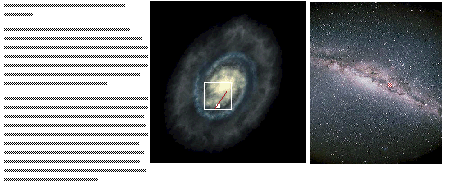
The way our sun is placed in the galaxy has created a situation that unless we could fly out of the galaxy we can not have a full view of the island universe where we live. However, we have been able to figure out that it is a spiral galaxy with several well developed arms. Our sun is situated on an arm which forms the outer structure of the spiral. We are riding on an arm which lies outside the Sagittarius arm and envelops it like a larger arm wrapping a smaller arm inside it. Our situation is similar to a microscopic organism, riding on a tiny bubble moving in the outer arm of a huge whirlpool, trying to find out what are happening at the centre of the whirling system. When we look at the direction of the centre the inner regions of the whirlpool envelope the core and obstruct the view. One needs to see through all the eddies and filaments forming the inner shells.
The Sagittarius arm which lies nearest to us in the direction of the center, shows typical shell structures, which I have discussed before. The arms which form shells in the galaxy, bifurcate. One of the bifurcated arm moves outward, while the other twists and move inward. This process of bifurcation and twisting generate a mouth in each shell. The eye-looking structure, which one sees between the constellations Scutum and Scorpius, is nothing but the active mouth in the shell which forms the Sagittarius arm of the galaxy. Earlier I have described such structure as bow-shaped leaves holding vortices in the middle.
The ejection from the centre move through these active mouths and therefore such mouths will generate violent activities, which one observes in reality. The ejections are seen to produce many large nebulae near this mouth. Among these ejected nebulae are the Cygnus superbubble, which spans about 1000 light years (corresponds to 2 meters in the football field) and the super-structure spewing lagoon and treffid nebulae. These ejections are all outward from the centre. On the opposite side of the galactic structure one should observe similarly violent ejections springing from the central region. However, it is not so easy for us to see what are happening behind the goal post on the other side. If we could see, it will be similar to what are happening on the side, which we observe.
The Milky Way galaxy is built in the same way as any spiral galaxy. It means hierarchical stacking up of arms on both side forming dual shells, which are arranged in a fractal manner. Each of these fractal arms is made of bifurcated streams, which form one, or multiple mouths, from where ejections occur. The arms constitute fractional dimensional fractal surfaces, which envelop each other like onion shells. The arms appear to rotate in the same direction. This rotation is caused by the vortex motions of the streams. I shall explain it in a later chapter where I shall summarize the dynamics of the structure formation.
The arms rotate and move in a way that all outer shells and the inner shells remain inseparably interlinked. Each shell has two components of motions which manifest through bifurcation of the arms: In one direction the arms feed the smaller shells which lie immediately in their wombs, and on the other direction they move outward to form the outer shell structures. Thus streaming towards the centre go hands in hands with ejections away from the centre throughout the system. The way this mechanism of accretion and ejections works will be discussed later.
Apart from the hierarchy and duality, forming the fractal arrangements of the arms, the galaxy possesses hierarchically embedded spirals in scales after scales, which is typical of any cosmic structure. This, in turn, manifests as the formation of knots in hierarchically descending scales. Thus, whatever I have described as the characteristics of the structure formation in the cosmos, will apply to our own galaxy too.
Therefore, I shall not go into details about the external structures of our galaxy. Instead, I shall focus on the very heart of the galaxy, because many people believe that a black-hole may be hiding there, and creating the violent activities observed at the centre.
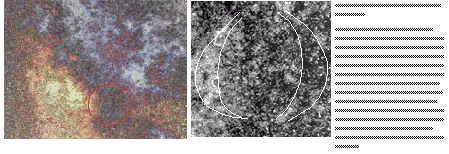
Since we do not have a face on view of our galaxy, we can not really see the spiral hierarchy which may exist in the outer regions. From our viewing position we can see the centre in ascending scale gazing at an angle with the plane of the spiral arms. This central area spans a dimension of about ten thousand light years. Some parts of this area are just barely visible in the optical wavelengths, while most of it are covered under dark clouds. The hidden parts of the centre can be seen in other wavelengths like radio, infrared and x-rays.
With radio one can see details of the inner structure, which covers about couple of thousand light years. With x-rays and infrared one can study the details down to the scales of light days. While studying the galactic centre in different wavelengths, one observes that the most intense radio, or x-ray emissions normally arise in the dual shells, which flank the centre, rather than the emissions come from the centre itself. Apart from the radio source known as SgrA*, which is believed to be the centre of our galaxy, the most radio, or x-ray intense parts usually lie in the mouths, which form the middle of the shells. They are like the hot spots in the arms, from where hot gases stream outward. An inner shell, which lies at the womb of an outer shell, remains attached with its mother shell by three main connections: One joint lies in the middle parts, the main hot spots in the arms, and the other two points lie on upper and lower tips of the shells.
The tips (cusps) of the shells, or the leaves, split into two parts. One of the split part moves inward to join with the similarly split part from the daughter shell, which protrudes upward to meet the mother shell. The other split part moves upward to connect with its own mother structure. The same connection mechanism works on the other halves of the shell structures on the opposite side of the centre. While the two halves of the dual shells thus connect and grow on the opposite sides, the split tips on both sides weave a complex knot structure on the top and the bottom, and bind the two sides of the shells into one full structure. As one penetrates deeper and deeper inside the heart of the structure, the knots formed by the weaving of the threads joining the tips of the shells become as prominent as the ejection mouths of the shells and the structure may often give the impression of a doughnut or ring. Inside such rings the spiral arms twist and create a three-dimensional form. The nature of this spiral is very similar in all structures possessing a compact core.
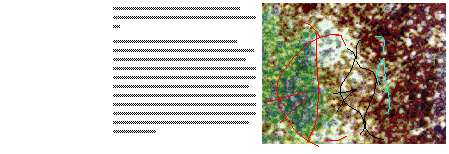
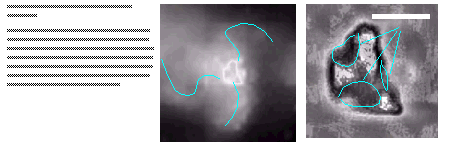
The three arms in the spiral twist and turn in space forming three ejection mouths. The arms are more clearly visible in x-rays, while the three mouths formed in between the arms are more pronounced in infrared wavelengths. By combining the x-ray observations with the infrared observations one can see how the IRS clusters, seen near the galactic core, have emerged from such mouths.
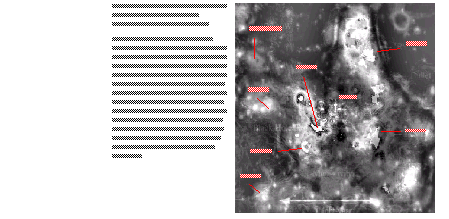
Often the most-intense x-ray emission spots are interpreted as the centres of the galaxies, and the x-ray emission is believed to be caused by the presence of a black-hole at that spot, which is cannibalizing material from the disk surrounding the black-hole. In contradiction to this interpretation, the present analysis shows that the x-ray emissions mostly occur from the spiral arms, which flank the central structure on opposite sides. The most intense spots are the ejection mouths that lie in the hierarchically embedded shells.The smaller the shell structure the more intense is the emission from such mouths. The x-rays arise from the regions where there exist very hot gases and are often associated with the regions of intense activities of stellar births.
In the center of our galaxy, such x-ray spots are associated with the objects known as Infra-Red Stars (IRS). They are very huge and immensely hot helium stars, or stellar complexes. The most prominent is the IRS 16 complex, which is a source of intense x-ray emission. However, the center of the galaxy does not lie there. According to the conventional belief the galactic center should lie at the position of the intense radio emission spot called SgrA*.
The intense radio emission spot SgrA*, which is believed to be the centre of our galaxy, may not be the centre. The hierarchical embedding of the dual shell structure continues in the scale of lightdays. One can see a double shell structure around a point about 1.5 light month South-East of the SgrA*.In fact, this could be the central structure. This structure is nothing unusual than a dense object that one observes in compact cores where the knot has been disrupted due to extreme tightening. Here one sees more explosive events than what one would expect if a black-hole was devouring the stars from the surrounding The number of stars increase as one approaches this central structure. However, violent ejections, which cause the formations of the huge IRS objects within the inner one light year, hurl the masses away from the centre before any black-hole may form. The centre contains a disrupted knot made of strings of stars. Around this center one observes ring-like structures formed by the innermost shells. The position of SgrA* lies in the North-West on the rim of a wheel, where the ejection rising from the top of the innermost shell has met the next shell, which looks more like a ring. In fact, this collision has formed a network of spiral forms, where several spirals have joined with each other and created an intense point of radio glow at SgrA*.

One may wonder why the scientific community is so convinced that they have observed a black-hole at the position coinciding with the position of SgrA* and consider the issue of the existence of the black-hole as a closed chapter?
It only tells that the scientists, like all other human beings, are also prone to see things they wish to see in order to confirm the belief they have cherished in their hearts for a long time. The belief that a black-hole exists at the position of SgrA* has led to intense activities of observations in different wavelengths of the region immediately around SgrA* during the last few years. The black-hole euphoria came when a group of scientists from Max-Planck-Institutt fur Physik in Germany, and the Department of Astronomy and Astrophysics, University of California published their observation of the motion of a star around SgrA* position. In an article titled "A Star in a 15.2 year Orbit around the Supermassive Black-hole at the Centre of the Milky Way" published in October 2002 issue of Nature, they claim to have identified the black-hole. The first assumption was that SgrA* is the centre of the Milky Way galaxy, and the second assumption is that there is a black-hole causing the motion of the star, which they have observed.
Both of these assumptions could be wrong. First, as I have indicated above, the centre of the Milky Way galaxy truly may not fall at the position where one observes the radio source SgrA*. The observed motions of the stars around SgrA* do not mean the existence of a black-hole at SgrA*. Before I shall discuss what may be causing the motions of the stars, I shall first discuss where SgrA* lies in relation to the central network of spirals in the galaxy, and how it relates with the knot formation and breakup.

The present analysis shows that the ejections moving along two arms in the North-West direction from the central object meet around the SgrA* location and give rise to a spiral structure around the radio source. From the centre of this spiral, three arms emerge in turn: one moves northward, one southward and the other towards the West. The westward and the southward moving arms give rise to the IRS 16 complex, which forms the mouth from where the North-West arm of the minispiral of several light years in dimension emerges.
The arms of the spiral in the inner region move in helical paths like springs made of stars. The motions of the stars observed around SgrA* follow the helical motions in the spiral arms of a structure centred near sgrA*. This spiral structure is about couple of light months in size.
Some of the stars in the region are seen to move much faster than the others. One of the fastest moving star called S2 is observed to form an elliptical orbit around SgrA*. The motions of the stars have been observed for a period of ten years and by that time S2 has been seen to complete two-third of an elliptical path. Several other stars are also seen to move in paths which give the impression that they too may possibly be following elliptical orbits around SgrA*. However, only for S2 an elliptical path seems to be confirmed. These observations have convinced the scientific community that the stars are moving in Keplerian orbits under the gravitational pull of a black-hole hiding at SgrA*.
A careful analysis of the motions of these stars shows that this is not a correct interpretation, and there is truly no black-hole at SgrA*. The motions of the stars are governed by the helical paths along the spiral arms. Like interacting system consisting of many bodies, the stars in the region seem to exchange material with each other, and the spiral arms as they move. The changes cause variable emissions from the stars as well as the arms. The variabilities depend on the ejections coming from the central object, which feed the arms varying with time. The variations occur like pulsations, while the arms fatten by accumulating material from the surrounding, and then tighten and become thinner. More accumulation of material cause the conditions of breakdown of knots, which develop in the region. By this mechanism the material are hurled and transported from the centre to outwards.

The stars moving in the spiral arms near SgrA* seem to constantly exchange materials with each other and thus change their structures. These exchanges happen in unison. While the material disappear from one it appears in the other. These exchanges of material are correlated with the ejections arising from the central object, and impinging on the spiral arms, which has a hotspot at the position of SgrA*.
As I have said, the stars in the system, moving in the helical paths along the spiral arms, seems to fatten and shrink, while creating variable illuminations. The variabilities of illuminations coincide with episodes of bursts. While the material streams in, the stars and the arms fatten until reaching a critical point: After that the stars and the arms shrink by dispersing material from them. The whole region appears as a pulsating system, correlated with the ejections coming from the centre.
The occasional flares seen in the immediate vicinity of SgrA*, which are normally interpreted as caused by the devourment of material from the disk by the black-hole, could be of different origin: The constant impingement of the arms from the material hurled from the centre may create scintillation throughout the spiral arms, which fatten and shrink in unison. The other could be caused by the cannibalism of the stars by each other. The stars moving in the dense environment in the region strongly interact with each other as they move, and they constantly snatch material from the others, when they come nearby.
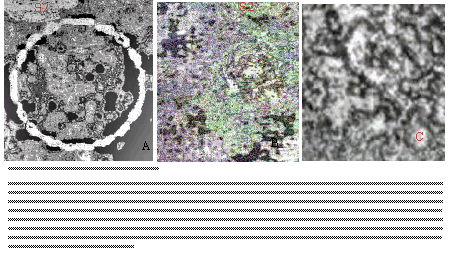
Therefore most of the stars in the region change in mass contents: Some fatten by eating parts of the other, some become smaller by loosing material to others. It resembles like a barbarian world, where everybody's existence are threatened by the others, who are moving in the same field. A bigger star, passing close by a smaller one, may snatch a part of it. This causes varying illuminations and flickering, which are observed in the infra-red wavelengths. The dense knot sitting at the SgrA* also participate in this cannibalistic feast. It has caught the star named S2 in its claws, which moves around it like its binary companion. The star S2 changes in its mass content, as well as shape, as it moves around SgrA*, while it itself, when struggling in the claw of the predator, snatches mass from other stars passing nearby. These interactions constantly bring changes in tensions of the strings at the southern half of the radio source. These strings may even tear. Such tearing will cause flares in x-rays and infra-red generating immense quakes in the nearby stellar system, especially in S2.
The motions of other stars follow the spiral arms and the directions prescribed by the general flow pattern through the spiral structure, which interact with the other spirals around. In fact, one may describe the whole central region of the galaxy as three-armed spirals. The way the spiral arms are intertwined decide the paths which the stars will follow. While they move along such paths, they may get torn while loosing mass, or get fatter by swallowing a piece from a neighbor, which merges with it. However, these constant splitting and merging of structures will not change the general pattern of flow in the region, which is decided by the spiral hierarchy which exists everywhere. In the central region of the Milky Way galaxy one can observe how the larger spiral arms spring from the mouths of the smaller spiral arms in ascending scales.


The process of building of the cosmic structures through the interactions of two spirals forming the shells, continue to hundreds of thousands of light years in the galaxies. The clustering of these galaxies in turn form dual spiral arms forming the structures of the galaxy clusters. These galaxy clusters, in turn, form superclusters in the same way. Thus the universe follows the same architectural design in trillions and trillions of times larger and larger scales. And, in every scale the universe appears as a knot. The universe can be viewed as a knot made of knot, which are in turn made of smaller knots and so on, which continues to trillions and trillions of times of smaller and smaller dimensions.

Truly, nowhere in this universe, there may exist a monster like a black-hole, from whose womb nothing can escape. The black-hole has haunted modern cosmology and aroused fanciful imagination in people about travelling back in time, among others. In fact, the black-hole is so popular that its demise may create a psychological crisis among the scientific community, and those who have found an wonderful outlet in the realm of fiction through a modern scientific theory of the cosmos.
The reality could be completely different. I have told about the motion of the star S2, which moves like a binary companion of the knot structure. The observations of the orbital motion of S2, have led the experts in the field to conclude that the star must be moving in a Keplerian orbit around an unseen black-hole. The observations of a few more stars may apparently give the impression that they too might be orbiting the SgrA* object in Keplerian orbits. If there exist such orbital motions of the other stars they can not be confirmed before many years in the future.

The present analysis of the motions of the stars indicate that apart from S2 and couple of other stars, the motions of the stars in the region follow the predicted helical paths along the spiral arms. Moreover, only a few stars show motions towards the SgrA*. In fact, the most of the stars move away from the radio-source. For example the star S4, which was very close to S2 in 1992, moves away from SgrA* and follows the spiral arm, while S2 moves around the radio source. Several stars show motions towards the mouth lying in the South-West direction of the SgrA*, which is the mouth of the "octopus". If anything in the region, which has any similarity with the black-hole monster, in fact, this mouth would be the closest representative. However, the motions inside the mouth and around it follow exactly the geometry of the spiral paths. There are also motions of stars moving away from the mouth. They could be objects ejected from the mouth of the octopus and these stars could be of different nature than the rest which move along the spiral paths. As said, apart from two possible stars, except S2, there seem to exist no orbital motion around SgrA*. The orbital motions of these stars need to be confirmed before speculating about the Keplerian orbits. Even if these two stars happen to trace orbital motions in the future, they should not follow Keplerian orbits, because they would be constantly changing their mass contents resulting from the usual practices in this cannibalistic world.
Apart from the flares observed at the centre of the galaxy in infrared wavelengths, Chandra x-ray satellite has also observed huge x-ray flares occurring at the centre of our galaxy. Immediately, such flares had been interpreted as the results of a black-hole devouring chunks from its neighborhood. A careful look at the x-ray flare observed by Chandra satellite shows that the flares do not occur at the centre but at the hot spots along the spiral arms, within 2 light years, where one observes the extremely hot IRS objects. The x-ray flare have occurred when jets, hurled from the centre, have encountered the dense environment of the spiral arms around the hot spots. As I have said before, this centre, from where the jets are ejected, does not lie at SgrA*, but is positioned about 1arcsec South-East of it. The centre itself does not show any x-ray flare, or any other flares what could be the true centre, from where the jets arise, has not received much attention because of the assumption that the centre of the galaxy lies at the radio source.The true center is truly a dark area, without much activities in radio, optical, infra-red or x-rays. May be, it could be a source of very high-energy gamma-rays instead. Only in infra-red it starts becoming very faintly visible. However, with advanced image processing of the x-ray and infra-red data, the central structure can be seen.

What is causing the ejections from the centre, which is hidden at most wavelengths? One may again like to speculate about the existence of a black-hole. However, the centre does not show any activities, which may resemble any cannibalism by a black-hole. Instead, it hurls away material from it. When such ejections strike the spiral arms huge flares occur, and thus one comes to know about the existence of the central object. In fact, it is not completely dark. It is possible to decipher from the available data in different wavelengths about what may be happening at the galactic centre.

The ejections from the central structure rises from several mouths - not from a single point. These mouths, as said before, lie at hot spots on the shells which rise in a hierarchical manner. Inside the central structure, which is about 1 lightmonth in size, one can observe hierarchical shells. As one moves deeper inside the core, the shells get more disorganized as if explosions have occurred inside the heart of the structure. However, from each level, where one sees embedded shells, one can discover double, or multiple mouths (hotspots) from where ejections take place. Thus there exist many mouths of ejections from the centre. While one closes up at the very heart of the structure, one sees structures which are similar to the ones seen in the hearts of the supernovae. However, the hierarchical build up still continues. With it the shells become more and more compact and three dimensional in shapes, and form 3D knots with multiple mouths of ejections. One may wonder where the hierarchical build up will come to an end?



Closer one approaches the very heart of the galaxy and penetrates the realm of the light hours, one sees strings. The knots and shells form by coiling and intertwining of the strings in a complex manner. In this realm too, one can decipher a centre.
At the end one finds a structure of dense knot where two opposite shells have formed two bell-looking shapes. There exists no vacant space for any more shells to develop in between these bells. The bells are interconnected with each other in the middle by a rod, and by loops at the top and the bottom parts. The entire structure acts as an object with several ejection mouths. The material ejected from these mouths help to create the hierarchical fractal structure. It is a fractal monster possessing a fractal dimension, which occupies an area of the size of the tip of a pin in the football field.